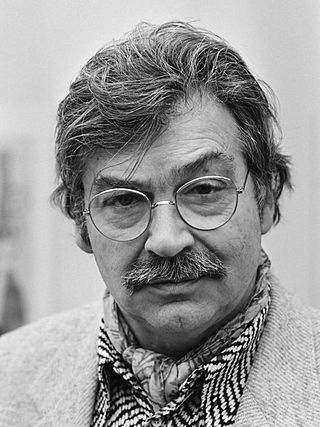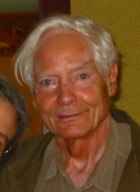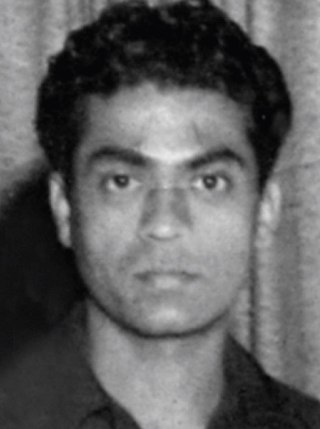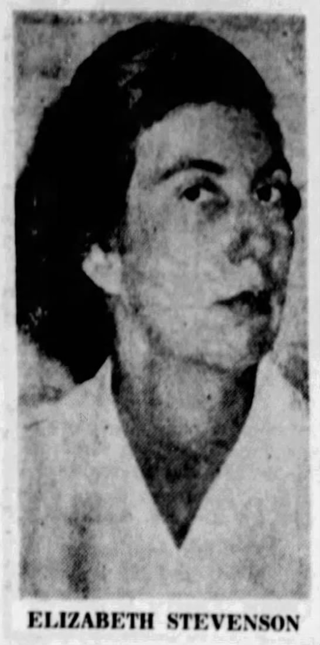Related Research Articles

Karen Louise Erdrich is an American author of novels, poetry, and children's books featuring Native American characters and settings. She is an enrolled member of the Turtle Mountain Band of Chippewa Indians, a federally recognized tribe of Ojibwe people.

Christiaan Karel Appel was a Dutch painter, sculptor, and poet. He started painting at the age of fourteen and studied at the Rijksakademie in Amsterdam in the 1940s. He was one of the founders of the avant-garde movement CoBrA in 1948. He was also an avid sculptor and has had works featured in MoMA and other museums worldwide.

Czech cinema comprises the cinema of Czech Republic as well as cinema while this country was a part of other countries.

In 1945 Albert Lasker and Mary Woodard Lasker created the Lasker Awards. Every year since then the award has been given to the living person considered to have made the greatest contribution to medical science or who has demonstrated public service on behalf of medicine. They are administered by the Lasker Foundation. The Lasker is sometimes referred to as "America's Nobels".

Benjamin Francis Webster was an American jazz tenor saxophonist.

Sheldon Mayer Harnick was an American lyricist and songwriter best known for his collaborations with composer Jerry Bock on musicals such as Fiorello!, She Loves Me, and Fiddler on the Roof.

William Stanley Merwin was an American poet who wrote more than fifty books of poetry and prose and produced many works in translation. During the 1960s anti-war movement, Merwin's unique craft was thematically characterized by indirect, unpunctuated narration. In the 1980s and 1990s, his writing influence derived from an interest in Buddhist philosophy and deep ecology. Residing in a rural part of Maui, Hawaii, he wrote prolifically and was dedicated to the restoration of the island's rainforests.
Ladislav Kubík was a Czech-American composer. His style is associated with other post-war Eastern European composers, such as Krzysztof Penderecki and Witold Lutosławski.

Bernhard Wicki was an Austrian-Swiss actor, film director and screenwriter. He was a key figure in the revitalization of post-war German-language cinema, particularly in West Germany, and also directed several Hollywood films.

Mona Lee Washbourne was an English actress of stage, film, and television. Her most critically acclaimed role was in the film Stevie (1978), late in her career, for which she was nominated for a Golden Globe Award and a BAFTA Award.

Benjamin S. Lerner is an American poet, novelist, essayist, and critic. The recipient of fellowships from the Fulbright, Guggenheim, and MacArthur Foundations, Lerner has been a finalist for the National Book Award for Poetry, the National Book Critics Circle Award in fiction, and the Pulitzer Prize for Fiction, among many other honors. Lerner teaches at Brooklyn College, where he was named a Distinguished Professor of English in 2016.

Dorothy Jeakins was an American costume designer.

Vasudeo S. Gaitonde, also known as V. S. Gaitonde, was regarded as one of India's foremost abstract painters. He received the Padma Shri by the Government of India in 1971.

Walasse Ting was a Chinese-American visual artist and poet. His colorful paintings have attracted critical admiration and a popular following. Common subjects include nude women and cats, birds and other animals.
The Corday–Morgan Medal and Prize is awarded by the Royal Society of Chemistry for the most meritorious contributions to experimental chemistry, including computer simulation. The prize was established by chemist Gilbert Morgan, who named it after his father Thomas Morgan and his mother Mary-Louise Corday. From the award's inception in 1949 until 1980 it was awarded by the Chemical Society. Up to three prizes are awarded annually.

Kazuhiko Nishijima was a Japanese physicist who made significant contributions to particle physics. He was professor emeritus at the University of Tokyo and Kyoto University until his death in 2009.
The Leventritt Competition was a highly prestigious international competition for classical pianists and violinists. It was founded in 1939 by the Edgar M. Leventritt Foundation Inc. of Cold Spring, New York, in memory of jurist Edgar M. Leventritt. The Leventritt Competition has now been discontinued.
Seymour Slive was an American art historian, who served as director of the Harvard Art Museums from 1975 to 1984. Slive was a scholar of Dutch art, specifically of the artists Rembrandt, Frans Hals, and Jacob van Ruisdael.

Elizabeth Stevenson was an American author. In 1956, Stevenson became the first woman recipient of the Bancroft Prize which she won for her book Henry Adams: A Biography. She was also awarded the Guggenheim Fellowship in 1951 and 1958.
Karel Janovický was a Czech composer, pianist, BBC producer and administrator who lived in the United Kingdom from 1950. He was one of the youngest of the group of European émigré composers who came to live and work in Britain during the 1930s and 1940s to avoid persecution at home.
References
- ↑ Ben Nicholson First Winner of Guggenheim International Award, Guggenheim Foundation, November 28, 1956
- ↑ Ben Nicholson, August 1956 (Val d'Orcia), 1956, Tate Gallery
- ↑ "Miro, Joan (1893–1983), with José Llorens Artigas". UNESCO. Retrieved 30 August 2016.
- ↑ "Guggenheim International Award 1958". Guggenheim Foundation. Retrieved 30 August 2016.
- ↑ Guggenheim International Award, 1958, Catalogue compiled by Mrs. Louise Averill Svendsen, from archive.org
- ↑ "Guggenheim International Award 1960". Guggenheim Foundation. Retrieved 30 August 2016.
- ↑ "Karel Appel obituary". The Daily Telegraph. 6 May 2006. Retrieved 30 August 2016.
- ↑ Karel Appel wins Guggenheim International Award 1960, Guggenheim Foundation, November 1, 1960
- ↑ Guggenheim International Award, 1960, Catalogue compiled by Mrs. Louise Averill Svendsen, from archive.org
- ↑ Guggenheim International Award, 1964, Catalogue compiled by Lawrence Alloway, from archive.org
- ↑ Alberto Giacometti Winner of 1964 Guggenheim International Award, Guggenheim Foundation, January 14, 1964
- ↑ Art: Guggenheim International Award, New York Times, January 15, 1964